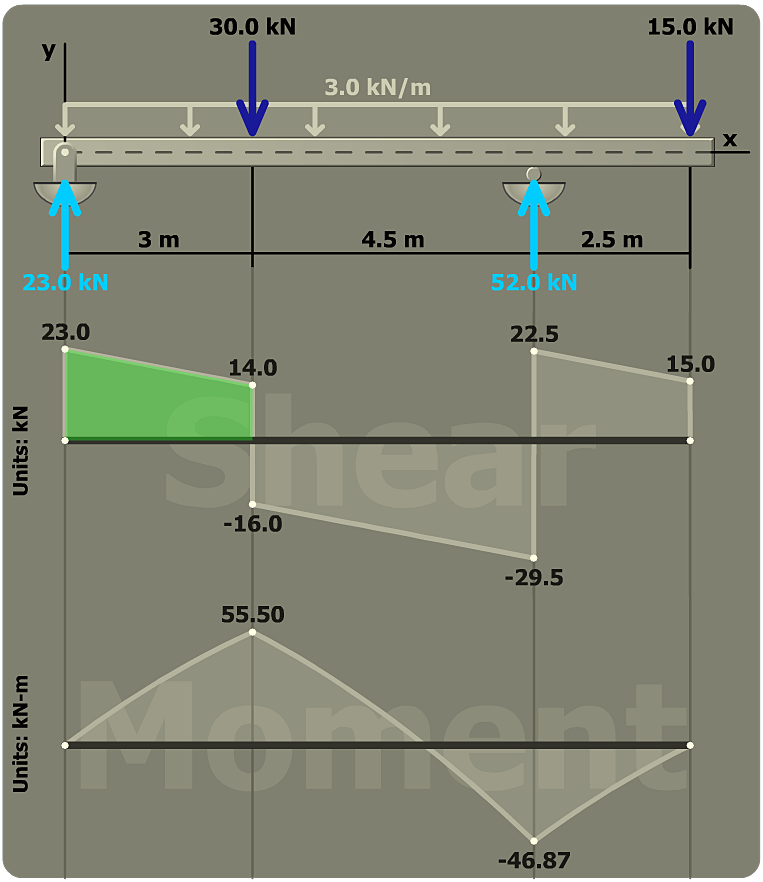
Areas under the shear diagram must be computed to construct the bending-moment diagram. Frequently, the area of a trapezoid (such as the area highlighted on the shear diagram at the left) must be determined.
While the trapezoid could be divided into a rectangle and a triangle, the following approach is much quicker:
1. Add the heights of the left and right sides of the trapezoid.
2. Divide this number by 2 to obtain the average height.
3. Multiply the average height by the base width to obtain the area.